Aktuell ist die Serie 21 mit SSTV Bildern zu empfangen.
Hier meine Ausbeute (zum aktuellen Zeitpunkt 6 von 12 komplett Empfangen )
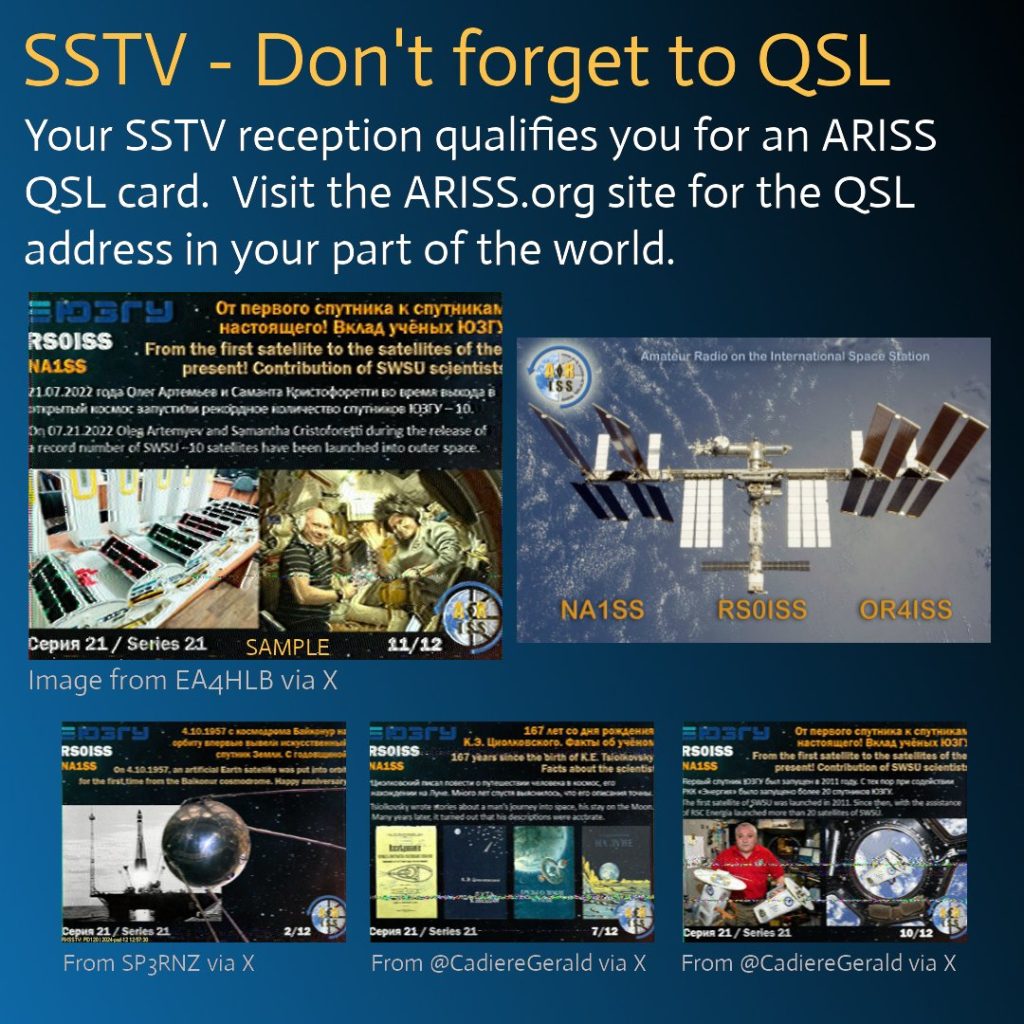
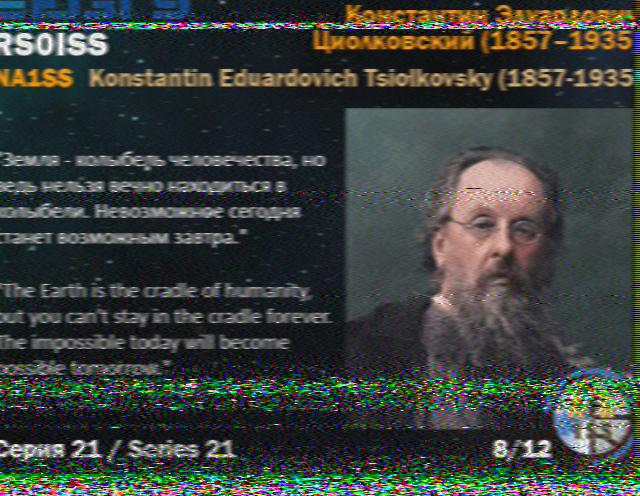
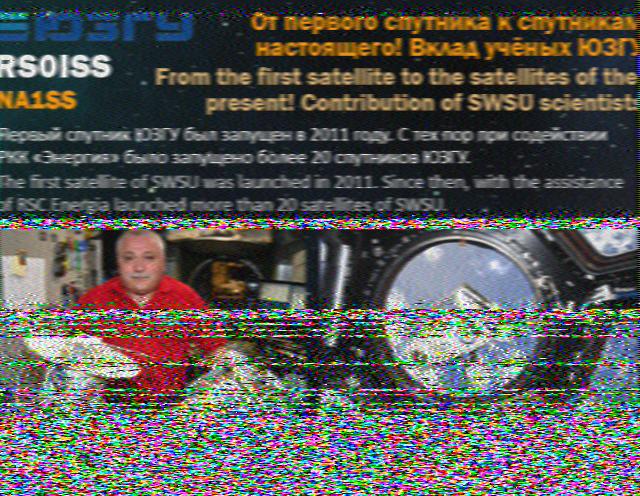
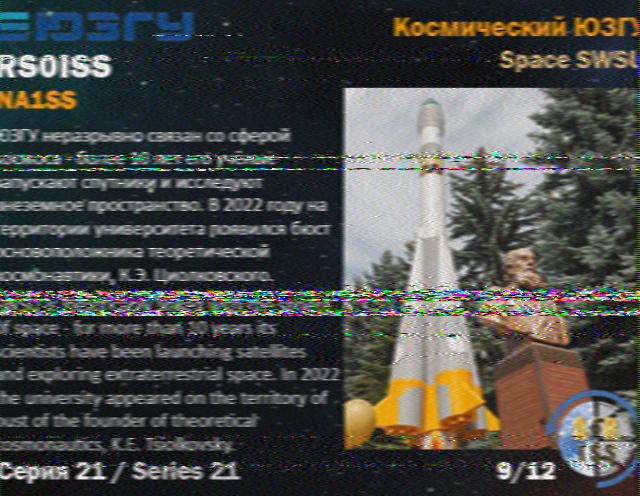
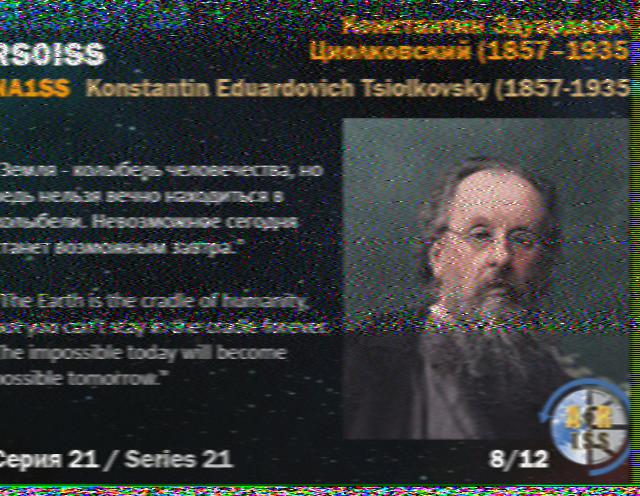
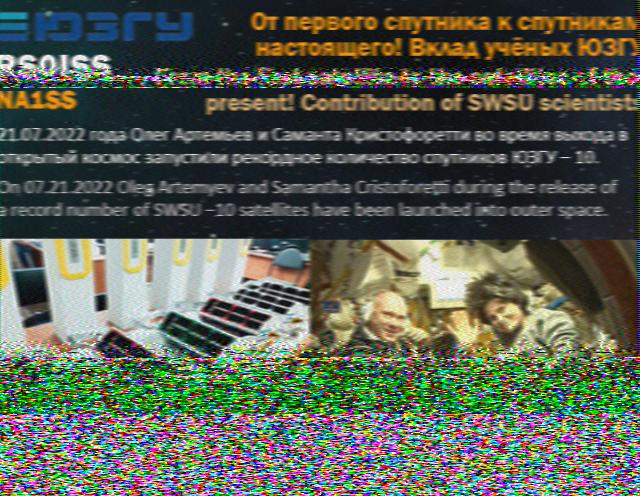
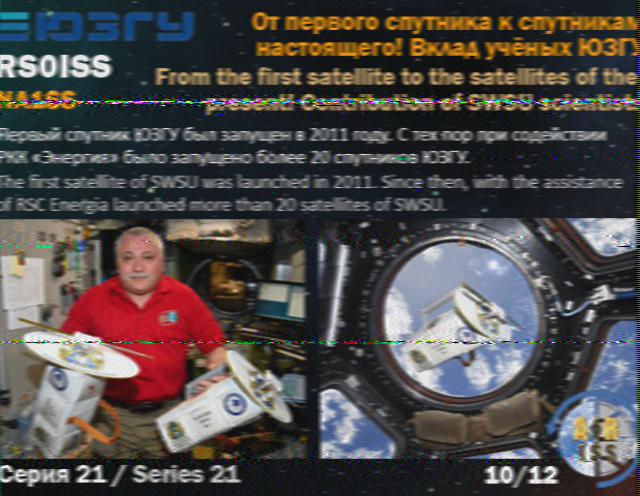
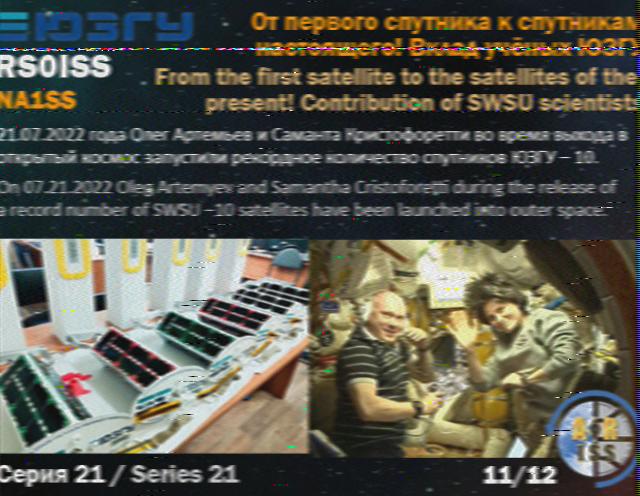
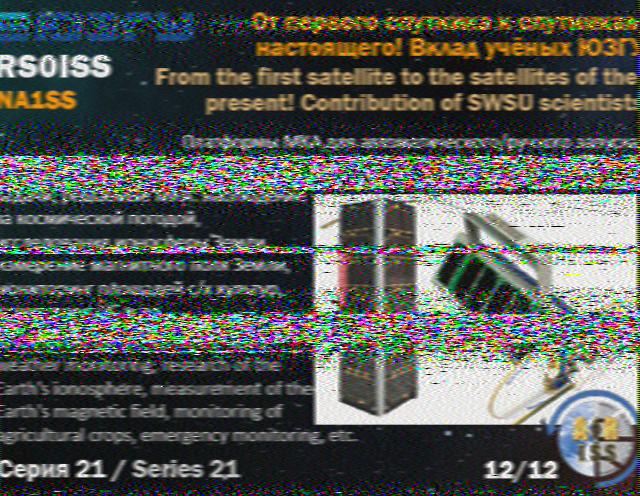
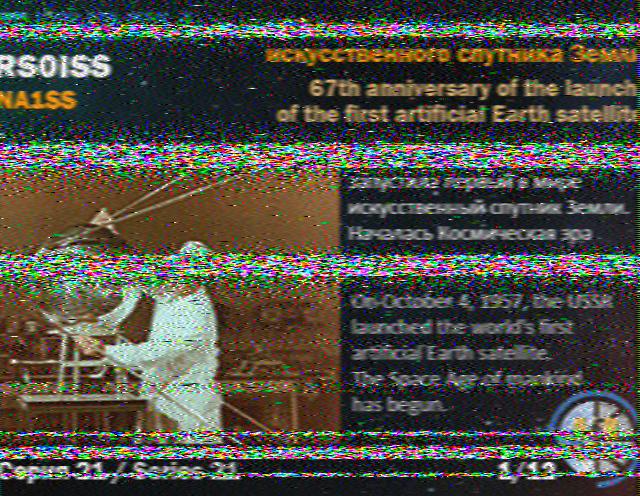
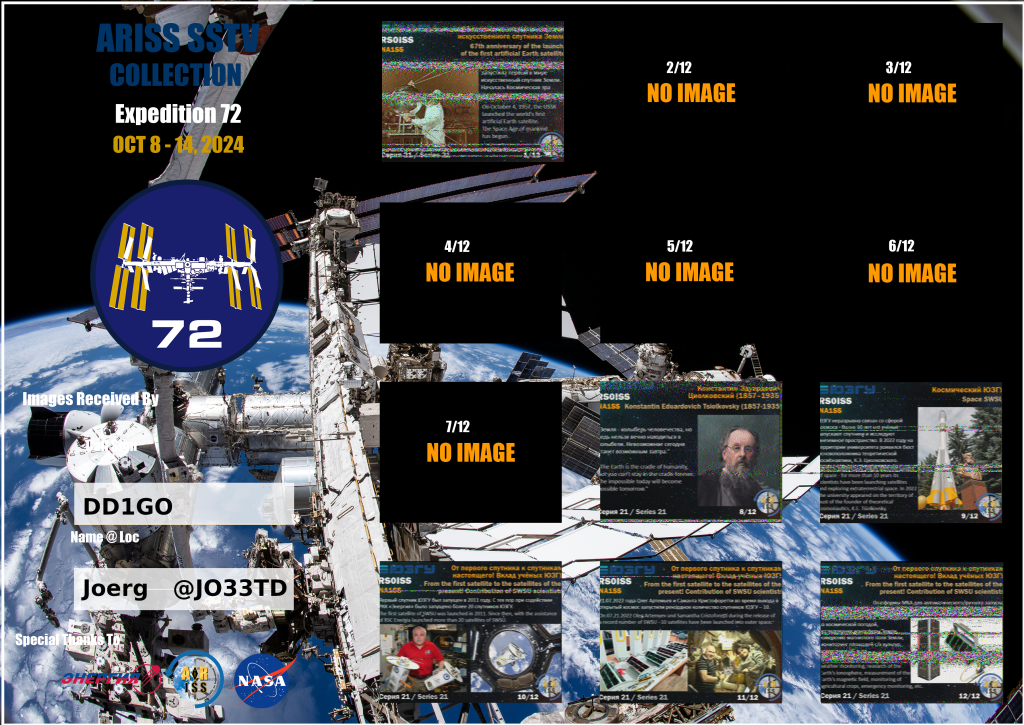
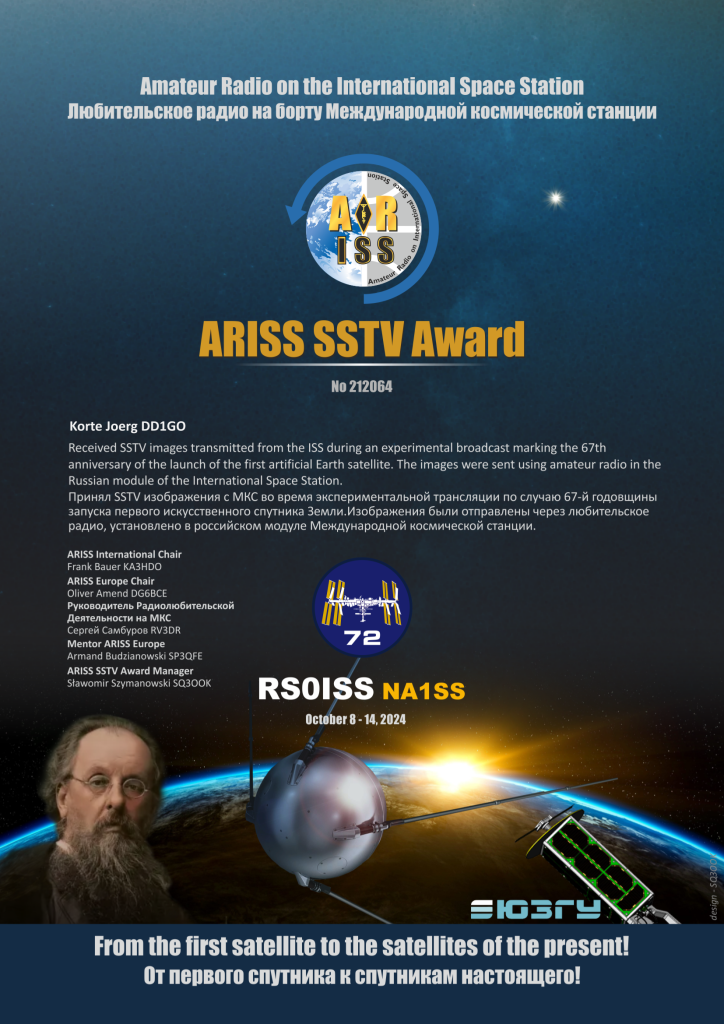
Hello,
Thank you for sending the report. After a long break, we are again enjoying the transmission of images from the International Space Station. Images of this series are transmitted experimentally, in order to test new equipment for amateur radio transmissions from the Russian module of the ISS.
The images refer to the ongoing International Space Week (October 4-10). On October 4, 1957, the first satellite Sputnik 1 was launched into Earth’s orbit, and on October 10, 1967, the Outer Space Treaty entered into force. The purpose of the celebrations is to recognize the contribution of scientists and space research to the development of humanity.
Images of Series 21 include Konstantin Tsiolkovsky (1857-1935) – a Russian scientist, creator of the theory of space flight and rocket construction. Several images show the first Earth satellite – Sputnik 1. The contribution of scientists and students of SouthWest State University (SWSU) in Kursk to the development of space technologies is also shown.
The diploma shows a photo of Konstantin Tsiolkovsky, the Sputnik 1 satellite, and the SWSU-55 satellite designed and built by scientists and students of SWSU in cooperation with RSC Energa.
The ARISS SSTV event was realized thanks to the commitment of Sergey Samburov RV3DR from ARISS Russia and Frank Bauer KA3HDO – ARISS International Chair, as well as many other people. The official ARISS awards are provided by the ARISS Ad-hoc Award Committee: Oliver DG6BCE (chair), Armand SP3QFE, Francesco IK0WGF, Bruce W6WW, Shizuo JE1MUI, Darin VE3OIJ, Ian VE9IM.
Amateur Radio on the International Space Station (ARISS) is a cooperative venture of international amateur radio societies and the space agencies that support the International Space Station (ISS). The primary goal of ARISS is to promote exploration of science, technology, engineering, the arts, and mathematics topics. ARISS does this by organizing scheduled contacts via amateur radio between crew members aboard the ISS and students. Before and during these radio contacts, students, educators, parents, and communities take part in hands-on learning activities tied to space, space technologies, and amateur radio.
*** You can support our activity: ***
*** https://www.ariss-eu.org/index.php/donations ***
More info:
https://www.ariss.org/
https://www.ariss-eu.org/
https://ariss.pzk.org.pl/sstv/
https://www.spaceflightsoftware.com/ARISS_SSTV/
Greetings – Slawek SQ3OOK, ARISS SSTV Award Manager


